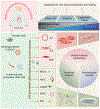A Guide to Understanding "State-of-the-Art" Basic Research Techniques in Anesthesiology
- PMID: 32371742
- PMCID: PMC9020655
- DOI: 10.1213/ANE.0000000000004801
A Guide to Understanding "State-of-the-Art" Basic Research Techniques in Anesthesiology
Abstract
Perioperative medicine is changing from a "protocol-based" approach to a progressively personalized care model. New molecular techniques and comprehensive perioperative medical records allow for detection of patient-specific phenotypes that may better explain, or even predict, a patient's response to perioperative stress and anesthetic care. Basic science technology has significantly evolved in recent years with the advent of powerful approaches that have translational relevance. It is incumbent on us as a primarily clinical specialty to have an in-depth understanding of rapidly evolving underlying basic science techniques to incorporate such approaches into our own research, critically interpret the literature, and improve future anesthesia patient care. This review focuses on 3 important and most likely practice-changing basic science techniques: next-generation sequencing (NGS), clustered regularly interspaced short palindromic repeat (CRISPR) modulations, and inducible pluripotent stem cells (iPSCs). Each technique will be described, potential advantages and limitations discussed, open questions and challenges addressed, and future developments outlined. We hope to provide insight for practicing physicians when confronted with basic science articles and encourage investigators to apply "state-of-the-art" technology to their future experiments.
Figures



References
-
- Morozova O, Marra MA. Applications of next-generation sequencing technologies in functional genomics. Genomics 2008;92:255–64. - PubMed
-
- Roberts A, Pimentel H, Trapnell C, Pachter L. Identification of novel transcripts in annotated genomes using RNA-Seq. Bioinformatics 2011;27:2325–9. - PubMed
-
- Reiman M, Laan M, Rull K, Sõber S. Effects of RNA integrity on transcript quantification by total RNA sequencing of clinically collected human placental samples. FASEB J 2017;31:3298–308. - PubMed
-
- van den Brink SC, Sage F, Vértesy Á, Spanjaard B, Peterson-Maduro J, Baron CS, Robin C, van Oudenaarden A. Single-cell sequencing reveals dissociation-induced gene expression in tissue subpopulations. Nat Methods 2017;14:935–6. - PubMed
Publication types
MeSH terms
Grants and funding
LinkOut - more resources
Full Text Sources

